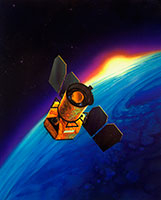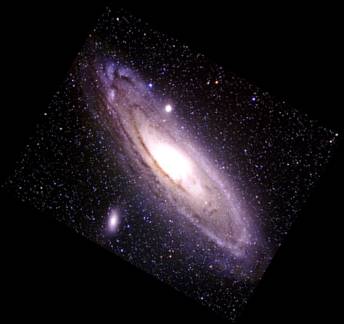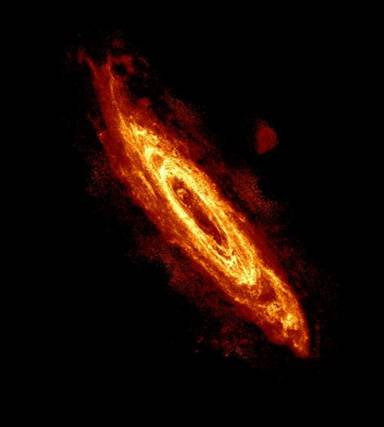
GALEX (Galaxy Evolution Explorer) is an orbiting ultraviolet telescope operated by NASA and the California Institute of Technology. Currently conducting an all-sky survey of extragalactic UV sources, its mission is to investigate galaxy evolution by collecting photometric and spectroscopic data related to star formation. More information on GALEX can be found here and the data archive is located here.

The GALEX telescope. (Image credit: GALEX website)
Radio data from ALFALFA is useful for determining properties of a galaxy's gas disk and dynamical properties of the galaxy as a whole, but does not give information about the galaxy's stellar matter. Characteristics such as stellar mass and star formation rate must be inferred from optical or UV data, which can often be found in SDSS or GALEX. In particular, optical data (from SDSS data archive located here and here) is useful for investigating a galaxy's star formation history and star formation efficiency, whereas ultraviolet data (from GALEX) can be used to study the galaxy's more recent star formation. Thus combining photometry from SDSS and GALEX gives a more complete picture of star formation over the galaxy's entire lifetime. Since HI data from ALFALFA yields information about the cold gas content of galaxies, comparing all three datasets allows us to study the relationships between gas disks and stellar disks, and the conversion of gas into stars. These analyses are detailed in Huang et al. (submitted 2012 to ApJ) and in other publications listed here.
GALEX has surveyed approximately 25,000 square degrees of sky in the near and far ultraviolet. The most recent dataset, GR6, was released in 2010. Technical documentation available here provides more information on the data as well as details of the mission. A list of GALEX-related publications can be found here.



The above images show M31 in optical, UV and HI. (Image credit: optical/HI, UV.)